
table of contents
- Poisonous psychoactive plants
- Types from A - G
- Types of H - S
- Types from T - Z
- Non-toxic hallucinogenic plants
- Types from A - R
- Types from S - Z
- frequently asked Questions
There are many plants that can have hallucinogenic effects on us humans when parts of them are consumed or prepared in other ways. Most of these psychoactive plants are also poisonous at the same time.
In a nutshell
- Most of the psychoactive plants are highly poisonous and should therefore only be consumed with caution
- a psychoactive plant was often used by herbalists in the Middle Ages, due to its hallucinogenic effects they were called witches
- many of the psychoactive plants are very popular in natural and cottage gardens because they attract many bumblebees, bees and other insects
- there are many plants called hallucinogenic, yet they all come from different plant families
Poisonous psychoactive plants
Many of the plants that have a hallucinogen are also poisonous. For some, a small amount is enough to become dangerous. The list shows the plants that are often used for intoxication, but are also poisonous. Therefore, these should not be eaten pure or prepared.
Types from A - G
Asian pokeweed (Phytolacca acinosa)

- Pokeweed family (Phytolaccaceae)
- Seeds and roots are poisonous
- Seeds are considered a snail remedy
- Root is used as an intoxicant
- Leaves are non-toxic and can be consumed
- small white flowers
- herbaceous bushy plant
- up to over a meter high
Farmer's Tobacco (Nicotiana rustica)

- Nightshade family (Solanaceae)
- Plant originates from the Amazon region
- is used here for healing
- very high nicotine content in the leaves
- can lead to poisoning or death
- herbaceous plant
- up to a meter high
- covered with glandular, sticky trichomes
- inconspicuous yellow flowers on panicles
Note: Farmer's tobacco is not the cultivated tobacco used to make cigarettes.
Betel nut palm (Areca catechu)

- Palm family (Arecaceae)
- contains arecoline
- stimulating effect
- similar to that of alcohol
- dangerous in high doses
- in Taiwan, betel nuts are sold on the street
- are chewed with pleasure
- important symbol for marriage in Vietnam
- Feather palm up to 25 meters high
- Leaves up to two meters long
Yellow monkshood (Aconitum lycoctonum)

- Buttercup family (Ranunculaceae)
- lat. Name means wolf slayer
- Intoxicant
- contains diterpene alkaloids
- Seeds were used by herbalists in the Middle Ages
- visual flight is hallucinated
- becomes between 50 cm and 1.50 m high
- pale yellow flowers
- very popular with bumblebees
Note: The tradition of the flying witches probably comes from the yellow monkshood.
Mean Mandrake (Mandragora officinarum)

- Nightshade family (Solanaceae)
- contains scopolamine and hyoscyamine
- formerly narcotic and aphrodisiac
- Symptoms of poisoning are similar to those of a deadly nightshade
- strong, herbaceous psychoactive plant
- violet calyx-flowers
Note: As soon as symptoms of poisoning appear after ingesting parts of plants that are hallucinogenic, the emergency number should be dialed immediately.
Poison lettuce (Lactuca virosa)
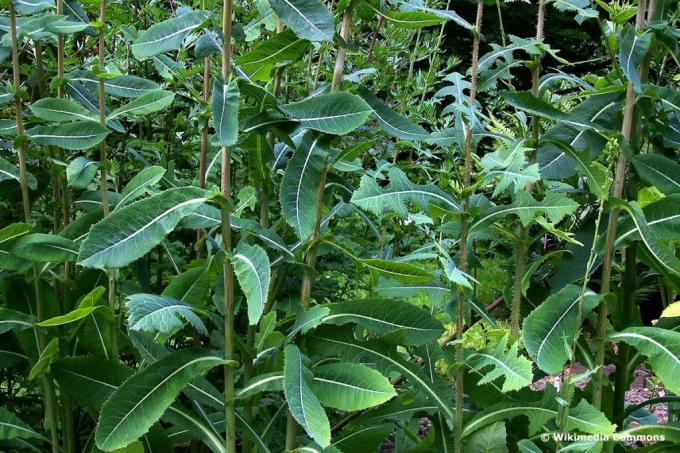
- Asteraceae family
- semi-legal drug
- can relieve pain
- slightly soothing
- Dried milky juice is used
- also leaves cooked as tea
- herbaceous plant
- up to two meters high
- yellow, inconspicuous flowers
- Roots smell unpleasant
Types of H - S
Hemp (cannabis)

- Hemp family (Cannabaceae)
- oldest crop on earth
- important raw material supplier
- Ropes from the fibers
- Oil from the stems
- Inhaler cannabidiol (CBD) pain reliever
- Only (THC) tetrahydrocannabinol is intoxicating
- herbaceous plant
- different heights of growth
- palmate leaves
Note: It is forbidden to cultivate hemp, even if it is only used as an ornamental plant. The plant is strongly hallucinogenic if the active ingredient THC is not filtered out. Anyone who does not adhere to the ban must expect severe penalties.
Sleep poppy (Papaver somniferum)

- Poppy family (Papaveraceae)
- somnifer means sleep-bringing
- Milky juice containing morphine
- from this opium is made
- Seeds are used in cooking and baking
- smell pleasantly nutty
- herbaceous plant
- up to 1.5 meters high
- pink or purple flowers
Note: The cultivation of opium poppies as an ornamental plant in one's own garden is subject to approval according to the Narcotics Act.
Myrtle myrtle (Anamirta cocculus)

- Moon seed family (Menispermaceae)
- Occurrence in Asia
- psychoactive plant
- various alkaloids in roots and trunk
- Fruits have a numbing effect
- were used in fishing
- twisting, woody liana
- Cultivation here only in a subtropical greenhouse
Tip: If you are unsure whether a psychoactive plant was ingested orally, that is also poisonous at the same time, the poison control center can be called, which provides valuable information can deliver.
Swamp porst (Ledum palustre)
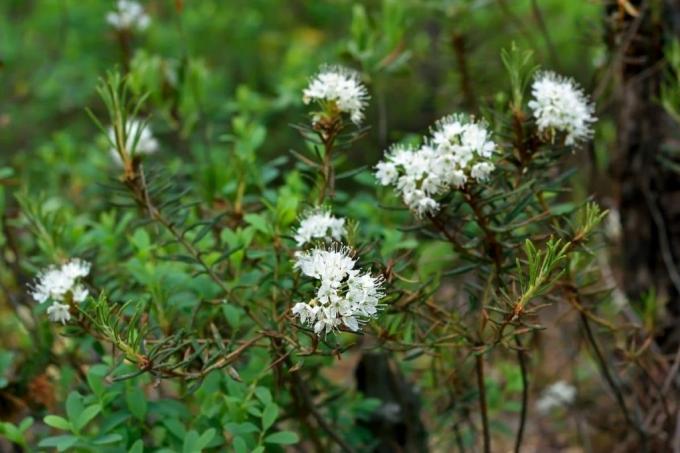
- Heather family (Ericaceae)
- Leaves were used for brewing beer
- intoxicating effect
- can cause aggressiveness
- Symptoms of poisoning are known
- do not lead to death
- Ingredients Palustrol and Ledol
- umbel-like flowers
- pink to white
- Shrub reaches up to 1.5 meters in height
Black henbane (Hyoscyamus niger)

- Nightshade family (Solanaceae)
- also called witch's herb
- Ingredients Hyoscyamine and Scopolamine
- Semen cause hallucinations and confusion
- herbaceous growth
- up to 60 centimeters high
- dirty white flower with purple veins
Note: Until the 17th In the 19th century, brewed beer was enriched with the seeds of henbane. This increased the intoxicating effect. This was later banned by the Bavarian purity law.
Types from T - Z
Deadly nightshade (Atropa belladonna)

- Nightshade family (Solanaceae)
- popular in the cottage garden
- Atropine has a pupil-expanding effect
- at a higher dose, delusional states
- was probably also used by herbalists in the Middle Ages
- hence the suspicion of witches
- herbaceous plant
- up to two meters high
- The fruit resembles a small black tomato
- Taste bitter
Note: Greek “Atropos” is the goddess of fate who cuts the thread of life.
Turkish poppy seeds (Papaver orientale)

- Poppy family (Papaveraceae)
- also known as garden poppies
- resembles the medicinal poppy seed, is smaller
- does not contain any morphine
- Oripavine and thebaine in the milky juice
- Codeine can be produced from this
- herbaceous plant
- up to a meter high
- orange to deep red flowers
Virginia tobacco (Nicotiana tabacum)
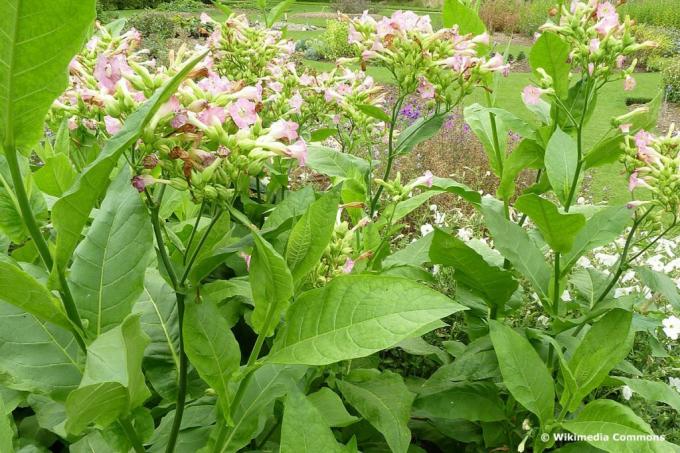
- Nightshade family (Solanaceae)
- also known as tobacco
- most important ingredient nicotine
- economically important tobacco species
- pink flowers on panicles
- Plant up to three feet tall
Non-toxic hallucinogenic plants
With the many different types of plants, there are also those that have a hallucinogenic effect, but are not poisonous and thus could be dangerous for us humans. However, these species are few and far between, there are only a few, the list is short here.
Types from A - R
Medicinal Poppy (Papaver bracteatum)

- Poppy family (Papaveraceae)
- Morphine has to be obtained industrially
- in contrast to the morphine from the opium poppy
- Cultivation is subject to approval
- Use as an ornamental plant permitted
- deep red flowers
- herbaceous plant
- can be up to 1.20 meters high
Hydrangea (Hydrangea macrophylla)
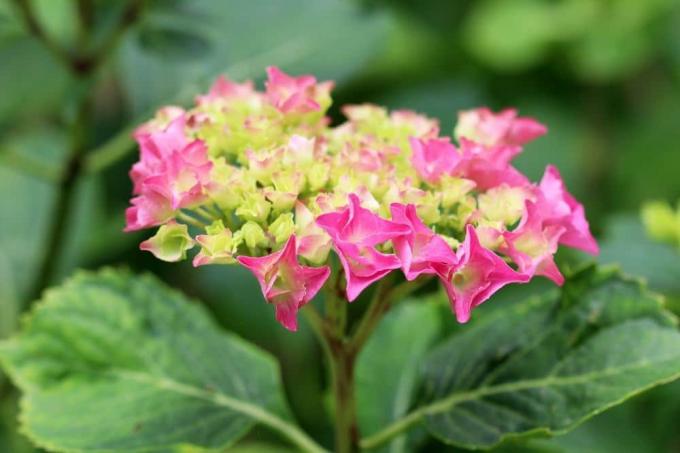
- Hydrangeaceae family
- young flowers and shoots used as intoxicants
- are dried and smoked
- effects similar to marijuana (made from hemp)
- popular plant in the cottage garden
- Subshrub
- deciduous
- thick, umbrella-shaped inflorescences
- many different colors
Note: Only in the last few years did young people discover that the hydrangea is hallucinogenic and therefore has an intoxicating effect.
Sweet flag (Acorus calamus)

- Calamus family
- Hallucinogen is in the roots
- has a mood-enhancing effect
- larger dose of mild hallucinations
- appetizing
- therefore often also in bitters
- is also known as "German ginger"
- traditional in Asian medicine
- inconspicuous flowers
- reddish cobs four to ten centimeters long
Tip: A non-toxic tincture made from the sweet flag plant as a psychoactive plant is contained in Coca-Cola.
Catnip (Nepeta cataria)
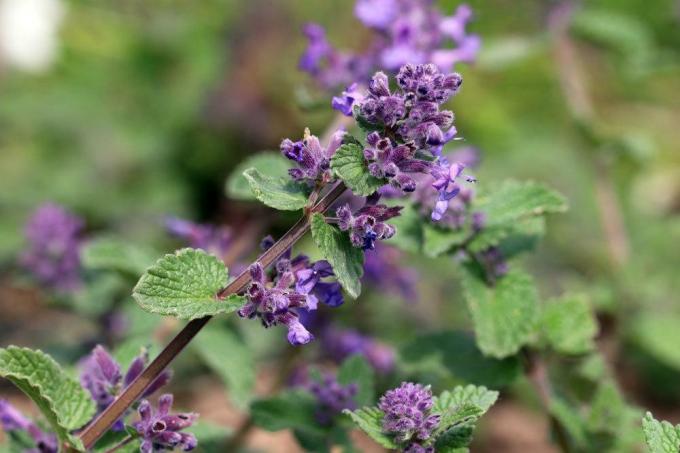
- Mint family (Lamiaceae)
- Cats are attracted to the smell
- contains actinidin
- has a calming effect
- pale blue to white flowers
- Plant up to three feet tall
Types from S - Z
Reed (Phragmites australis)
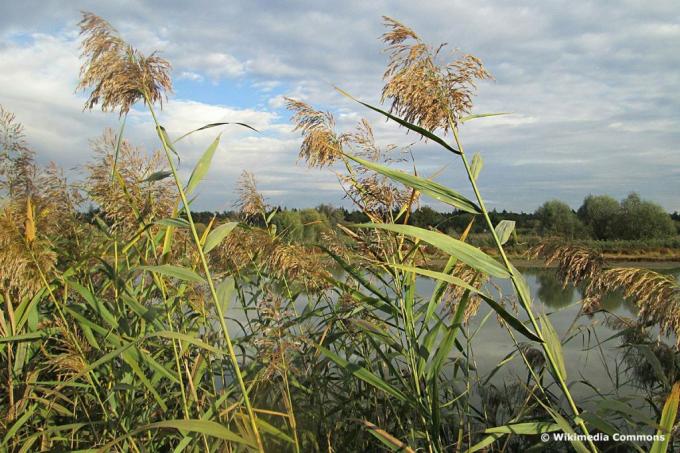
- Sweet grass family (Poaceae)
- psychoactive plant
- Baeocystin and Bufotenin in the rhizome
- have a hallucinogenic effect when ingested
- possesses rhizomes
- forms ears
- a reed up to four meters high
Note: In fact, reeds are known for their properties as a good building material rather than as a psychoactive plant.
Morning Glory (Ipomoea purpurea)

- Convolvulaceae family
- also called purple bindweed
- Seeds are soaked in water
- states of intoxication can be achieved through emulsion
- 200 to 300 seeds have the same effect as 300 mg LSD
- purple, red or pink flowers
- Plant up to two feet tall
- also grows on paths and on roadsides
frequently asked Questions
In contrast to hemp plants, most of the plants presented here are not forbidden to be cultivated in your own garden. On the contrary, most of them are popular plants for a colorful cottage garden.
It is important that you know the effect if parts of a plant that has hallucinogenic effects and is also poisonous are put in the mouth. You should therefore refrain from cultivating such plants in the garden if there are small ones in the household Children, possibly also adolescents and pets, who are freely accessible to the plants would.
This is because the limit values of an intoxicating dose are very close to the toxic doses and these can quickly merge into one another. Hallucinations are quickly replaced by comatose states and unconsciousness.



